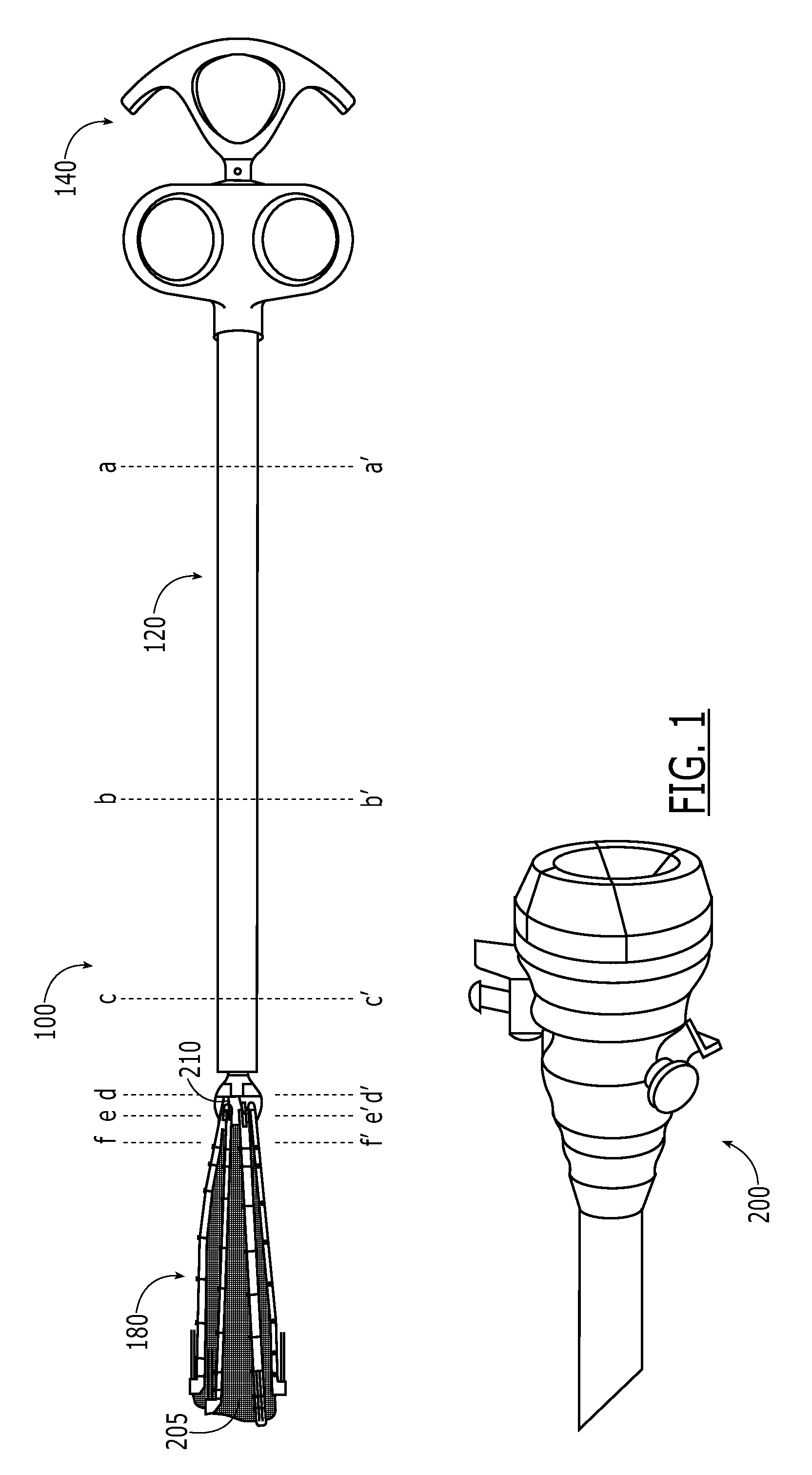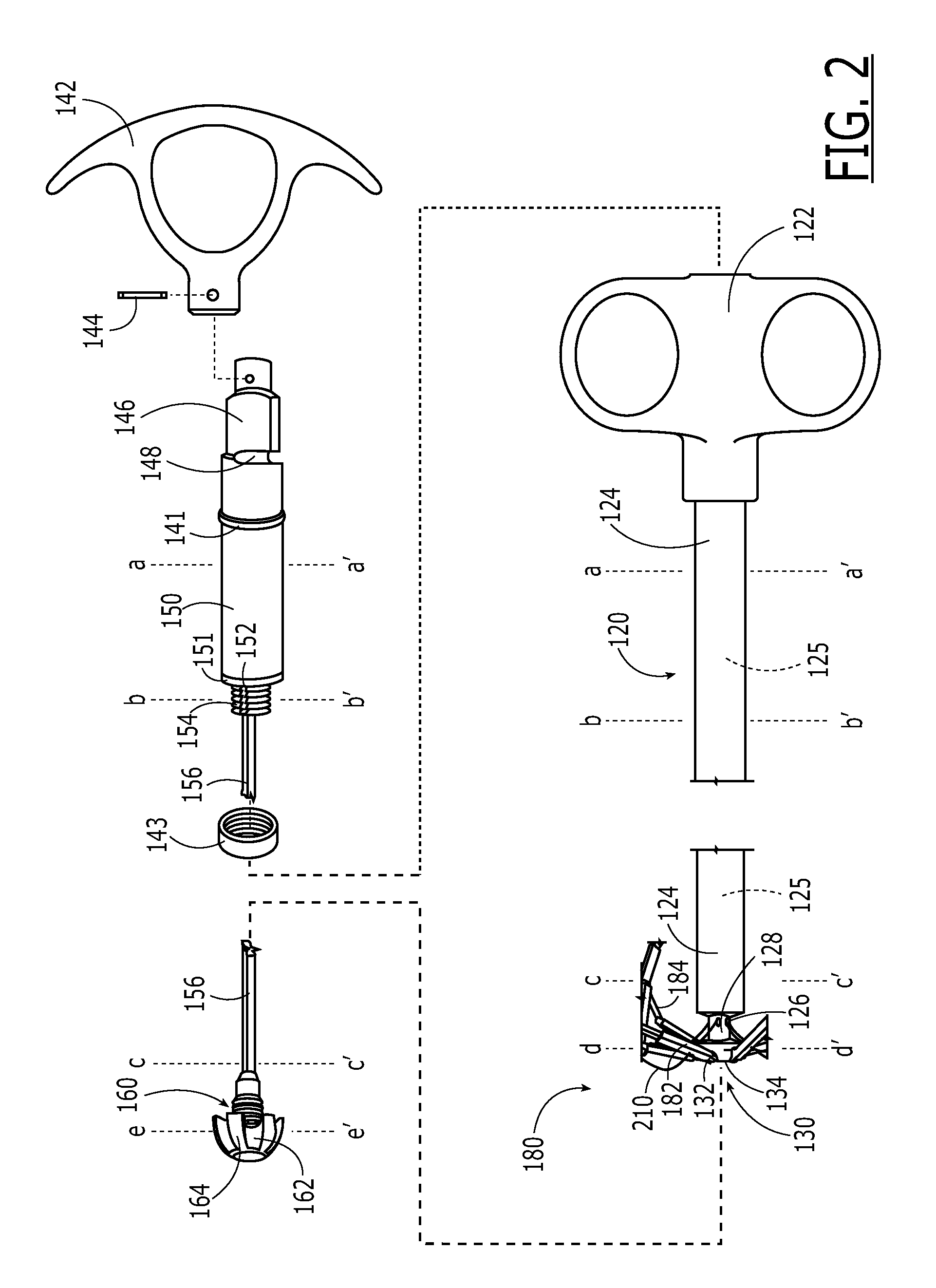Systems and methods for hernia repair
a hernia and minimally invasive technology, applied in the field of minimally invasive hernia repair systems, can solve the problems of reducing the recurrence rate of ventral hernias after open primary suture procedure, and reducing the recurrence rate of ventral hernias, so as to facilitate coupling, restrict the lengthwise freedom of movement, and facilitate the effect of coupling
- Summary
- Abstract
- Description
- Claims
- Application Information
AI Technical Summary
Benefits of technology
Problems solved by technology
Method used
Image
Examples
Embodiment Construction
[0027]The invention generally relates to minimally invasive hernia repair systems. One embodiment of the present invention relates to a minimally invasive implant-based ventral hernia repair system. The system includes a first elongated member with an internal channel extending between a distal and proximal opening. A second elongated member extends through the internal channel of the first elongated member. A set of arm members is moveably coupled to the distal end of the first elongated member such that the arm members have a restricted freedom of movement with respect to the first elongated member. The arm members each include a set of lengthwise moveably intercoupled segments. A set of tension members extends lengthwise along the arm members and is rigidly coupled between the distal most segment of each arm member and the second elongated member. The degree of tension in the tension members corresponds to the configuration of the arm members with respect to the first elongated m...
PUM
 Login to View More
Login to View More Abstract
Description
Claims
Application Information
 Login to View More
Login to View More - Generate Ideas
- Intellectual Property
- Life Sciences
- Materials
- Tech Scout
- Unparalleled Data Quality
- Higher Quality Content
- 60% Fewer Hallucinations
Browse by: Latest US Patents, China's latest patents, Technical Efficacy Thesaurus, Application Domain, Technology Topic, Popular Technical Reports.
© 2025 PatSnap. All rights reserved.Legal|Privacy policy|Modern Slavery Act Transparency Statement|Sitemap|About US| Contact US: help@patsnap.com



